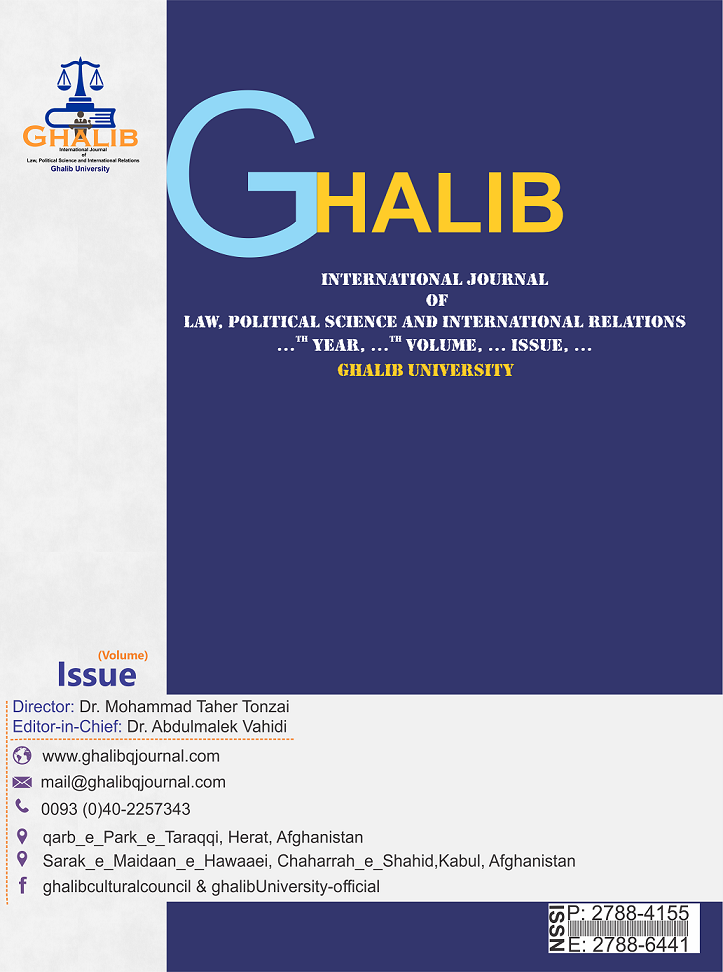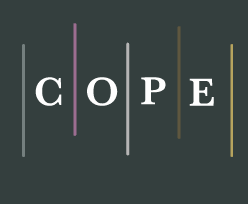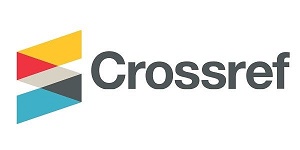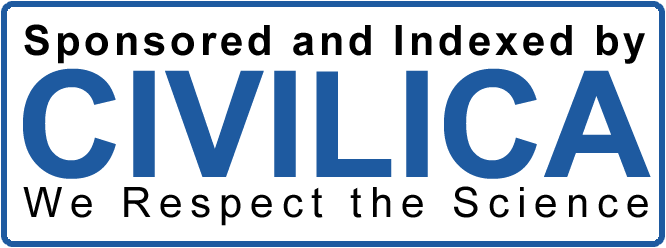Representation of Arghavan's poetic discourse in the poem of Sayeh
(based on Fairclough's approach)
DOI:
https://doi.org/10.58342/ghalibqj.V.12.I.3.1Keywords:
contemporary poetry, Hushang Ebtahaj, Arghavan, critical discourse analysis, FairclafAbstract
Critical discourse analysis is one of the theories in the field of literary criticism, which has attracted the attention of many researchers of Persian language and literature today. This theory, by examines the empirical studies between the social and cultural developments of various fields of society and the discourses in it, while expressing the relationship between the internal and external criteria of the text, the dominant power of the society in which the literary work was formed. Fairclaf is one of the theorists in the field of critical discourse who considers three levels for his theory. At the first level, based on Holidey's role-oriented order, he examines the structure of the text; In the second level, which is called interpretation, it examines the situational and intersexual context used in the text, and in the third level, explanation examines the formation factors, ideology and effects of the discourse; From my point of view, Hoshang Ebtahaj is one of the prominent poets in contemporary Persian literature, who depicts the political, social and cultural situation in his poetry, and the analysis of his works based on the critical approach and discourse analysis provides us with significant achievements. In the present research, we aimed to examine the political and social discourses in Arghvan's poetry and find out what the discourses in Arghvan's poetry are and to what extent the components in this poem are traceable? In order to achieve the goal, we have prepared the data in an analytical-descriptive manner using Fairclaf's approach. Our findings in the research show: Ebtahaj, with a poetic narrative, expressed issues such as inequality, injustice, cultural and political situation in Arghvan's poetry, and by strengthening the spirit of independence, freedom and the desire to resist has hope for the survival and discourse of change in the society and humanity.
References
آقاگلزاده، فردوس. (1385). تحلیل گفتمان انتقادی. تهران: علمی و فرهنگی.
آقاگلزاده، فردوس. (1391). «توصیف و تبیین ساختهای زبانی ایدیولوژیک در تحلیل گفتمان انتقادی». ایران: فصلنامۀ پژوهشهای زبان و ادبیات تطبیقی. شمارۀ دوم. صص 1-19.
آقاگلزاده، فردوس؛ غیاثیان، مریم. (1386). «رویکردهای غالب در تحلیل گفتمان انتقادی». ایران: مجلۀ زبان و زبانشناسی. 3(5). صص 39-54.
ابتهاج، هوشنگ. (1386). تاسیان، تهران: نشر کارنامه.
بشیریه، حسین. (1392). دیباچهای بر جامعهشناسی سیاسی ایران دورۀ جمهوری اسلامی. چ ششم. تهران: نگاه معاصر.
تاجیک، محمدرضا. (1383). «گفتمان، پادگفتمان و سیاست». تهران: مؤسسۀ تحقیقات و توسعۀ علوم انسانی.
جهانگیری، جهانگیر؛ بندرریگیزاده، علی. (1392). «زبان، قدرت و ایدئولوژی در رویکرد انتقادی فرکلاف به تحلیل گفتمان». ایران: پژوهش سیاست نظری. شمارۀ 14، صص 57-82.
جهانینسب، احمد. (1401). «جایگاه دال مرکزی در تحلیل گفتمان انتقادی با تأکید بر رویکرد نورمن فرکلاف». ایران: نشریۀ مطالعات علوم اسلامی انسانی. 8(29). صص 105-94.
سجادی، حمید. (1390). «تحلیل گفتمان». ایران: نشریۀ کتاب ماه علوم اجتماعی. 37. صص 122 تا 127.
شهابی، احمد. (1397).«بررسی و تحلیل مضامین و درونمایههای شعر هوشنگ ابتهاج با تأکید بر عناصر پایداری». پایاننامۀ کارشناسی ارشد. به رهنماییِ عبدالله حسنزاده میرعلی. دانشگاه سمنان. سمنان. ایران.
صادقی، سهیلا؛ میرزایی، علی. (1397). «بررسی زبانشناختی نفثةالمصدور اثر شهابالدین محمد زیدری با رویکرد تحلیل گفتمان انتقادی». ایران: فصلنامۀ زبانشناسی اجتماعی. شمارۀ سوم، صص 9-21. https://doi.org/10.30473/il.2019.39888.1124
عضدانلو، حمید. (1380). گفتمان و جامعه. تهران: نی.
فرای، نورتروپ. (1377). تحلیل نقد. ترجمۀ صالح حسینی. تهران: نیلوفر.
فرکلاف، نورمن. (1379). تحلیل گفتمان انتقادی گفتمان. ترجمۀ فاطمه شایسته پیران و دیگران. ویرایش: محمد نبوی و مهران مهاجر. تهران: وزارت فرهنگ و ارشاد اسلامی، دفتر مطالعات و تحقیقات رسانهها.
کوهیمقدم، پروین. (1394). «بررسی سیر تحول فکری هوشنگ ابتهاج و بازتاب آن در اشعارش». پایاننامة کارشناسی ارشد. بهرهنمایی عبدالناصر نظریانی. دانشگاه ارومیه. ارومیه، ایران.
محسنی، محمدجواد. (1391). «جستاری در نظریه و روش تحلیل گفتمان فرکلاف». ایران: مجلۀ معرفت فرهنگی اجتماعی. 3(3). صص 63-86.
یورگنسن، ماریان و فیلیپس، لوئیز، (1389). «نظریه و روش در تحلیل گفتمان». ترجمۀ هادی جلیلی. چ ششم. تهران: نی.
References
Agah Gol Zadeh, F. (2006). Critical Discourse Analysis. Tehran: Elm-o-Far hangi Publishers. (Persian).
Ebtehaj, H. (2007). Tasyan. Tehran: Kar name Publishers. (Persian).
Agah Golzadeh, F. & Ghayathian, M. (1386). Dominant Approaches in Critical Discourse Analysis. Iran: Journal of Language and Linguistics, 3(5), 39-54. (Persian).
Agah Gol Zadeh, F. (2012). Description and Explanation of Ideological Language Constructs in Critical Discourse Analysis. Iran: Journal of Comparative Language and Literature Studies, 2, 1-19. (Persian).
Beshiriyeh, H. (2013). Introduction to Political Sociology in the Era of the Islamic Republic of Iran. Tehran: Contemporary Negahe Moaser. (Persian).
Tajik, M. (2004). Discourse, Counter-Discourse, and Politics. Tehran: Institute of Humanities and Cultural Studies. (Persian).
Jahan giri, J., & Bandargi-Zadeh, A. (2013). Language, Power, and Ideology in Fairclough's Critical Discourse Analysis. Iran: Journal of Theoretical Politics, 14, 57-82. (Persian).
Jahan girinesbou, A. (2022). The Central Role of the Signifier in Critical Discourse Analysis with an Emphasis on Norman Fairclough's Approach. Iran: Journal of Islamic and Human Sciences, 8(29), 105-94. (Persian).
Sajjadi, H. (2011). Discourse Analysis. Iran: Book of the month of economic sciences, 37, 122-127. (Persian).
Shahabi, A. (2018). Examination and Analysis of Themes and Inner Meanings in Houshang Ebtehaj's Poetry with an Emphasis on Elements of Stability. Master's thesis, Semnan University, Semnan, Iran. (Persian).
Sadeghi, S., & Mirzaei, A. (2018). Sociolinguistic Analysis of Nafseh Al-Masadur by Shahab al-Din Mohammad Zidari using Critical Discourse Analysis. Iran: Journal of Sociolinguistics, 3, 9-21. (Persian).
Azdandloo, H. (1380). Discourse and Society. Tehran: Ni Publishing. (Persian).
Fraser, N. (1998). Critical Analysis. Translated by Saleh Hosseini. Tehran: Nilofar Publishing. (Persian).
Fairclough, N. (2000). Critical Discourse Analysis: The Discourse of Discourse. Translated by Fatemeh Shayesteh Piran et al. Tehran: Ministry of Culture and Islamic Guidance, Office of Media Studies and Research. (Persian).
Kouhi maghdam, P. (2015). An Investigation into the Intellectual Evolution of Houshang Ebtehaj and Its Reflection in His Poetry. Master's thesis, Urmia University, Urmia, Iran. (Persian).
Mohseni, M. (2012). An Essay on Fairclough's Theory and Method in Discourse Analysis. Iran: Journal of Cultural and Social Knowledge, 3(3), 63-86. (Persian).
Jorgensen, M., & Phillips, L. (2010). Theory and Method in Discourse Analysis. Translated by Hadi Jalili. Tehran: Ney Publishing. (Persian).
Downloads
Published
How to Cite
Issue
Section
License
Copyright (c) 2023 ghalib quarterly journal

This work is licensed under a Creative Commons Attribution 4.0 International License.













